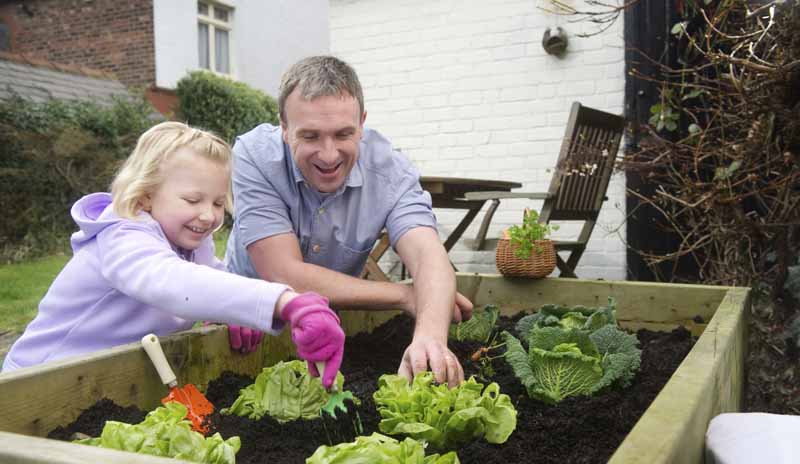
Spring has arrived and now is the time to begin vegetable gardening. Growing your own produce is a great project for the entire family and it will provide you with fresh, delicious food to enjoy for many months to come. Here are some tips on how you can easily spring into growing your own grocery list for fresh, straight-from-your-garden flavor this season.
Where to Begin
Vegetable gardening should not be overlooked in early spring. Now is a great time to decide where the garden will go and how much space you have available. So many of us wait until after we’ve already purchased the plants to decide where the garden should go and that is when we discover we have purchased too many plants. Save time and money and produce more fruit and vegetables by taking the time to measure now. Then, when you shop for your plants you can use those measurements to plant the space you have.
Tip: Take some pictures of the area with your phone as well as a picture of the piece of paper with the measurements on it—that way the information is with you no matter when you decide to shop.
By taking the time to prepare your garden now, and then following through on watering, pruning and fertilizing the rest of the season, you will ensure your garden is lush and fruitful.

When to Plant
One of the questions I hear most often this time of year is “Is it time to plant?” The answer depends entirely on which vegetables you want to plant.
Early April is a great time to plant cool weather crops such as lettuce, onions, carrots, kale, radishes and spinach to name a few. These types of veggies perform best in daytime temperatures that are around 60-65-degrees and will tolerate some light frost. They are harvested in late June through July before the heat of summer. Warm weather crops like tomatoes, peppers and cucumbers should not be planted outdoors until after May 15.
A word about fruit trees and berry bushes: Fruiting trees and shrubs such as figs, blueberries, strawberries, pears, plums and grapes can also be planted outdoors now. As with vegetables, follow the proper spacing, fertilizing and watering guidelines so that you can produce the best possible harvest.
Where to Plant Vegetables
Vegetable gardens should be located in full sun; avoid areas that are shaded by trees, buildings or other structures. The soil should drain well and not puddle for any length of time.

Prepping the Soil
Good soil preparation before planting will guarantee healthy vegetable plants and higher yields at harvest time. Mix in a soil amendment with a high organic content such as Dr. Earth Vegetable Garden Planting Mix or compost into the soil. Rake the area smooth and level, breaking up clods and lumps of soil.
Planting Vegetables
It is important to follow the spacing guidelines on the seed pack or plant label for each type of vegetable. This ensures your plants have the room they need to grow and produce fruit. Plants like tomatoes, peppers and eggplant may require the extra support of a tomato cage or stakes.

Fertilizer
Remember, you are what you eat, so choosing an organic fertilizer for your vegetable garden is a must. One of my favorites is Espoma Garden-tone, which is an all-natural, organic, slow release, continuous feeding fertilizer. Apply once a month May through August for optimum results.
Watering
Water vegetable gardens only when the soil is dry and needs it. Deep, but infrequent, watering, two or three times a week is best if there is no natural rainfall. Excessive watering may encourage insect and disease problems.
Mulch
Use a mulch to prevent weeds, conserve water and cool soil temperatures.
Growing your own food is so rewarding. Whether you try planting just one lettuce plant this spring or decide to expand into a larger space, I hope you’ll get it a try. Nothing tastes better than the fruits and vegetables you grow yourself.
Karen Musgrave, CNLP, is a marketing and education specialist at Hicks Nurseries.



















One Response
What should I plant in fall on Long Island.